The Latest from TechCrunch |  |
- Spotify Ecosystem Grows As ShareMyPlaylists Secures Angel Funding
- Memento Corruptionem: Sprout Watches Are Biodegradable
- Carl Icahn In Talks With Motorola About Its Massive Patent Portfolio
- Where Is My Magical NFC Phone Wallet?
- Raboo: Panasonic Japan To Launch Android E-Book Reader/Tablet (Video)
- SparkBase’s Paycloud Aims To Bring Loyalty Cards To Mobile Phones
- More Evidence There’s No Bubble: VC Investments Were Flat in Q2
- Activision CEO Spills The Beans: Guitar Hero Isn’t Dead, Just Resting
- Out Of The Blue, Instacolor Forced To Change Name By The “True” Color
- SkyGrid Brings Realtime News Aggregator To Android Tablets
- Right Angle LCD Watch Tells The Time But Tells It Slant
- T-Mobile’s Motorola Defy Gets An AT&T-Bound Successor?
- We&Co: These Are The People In Your Neighborhood (Bar, Coffee Shop, Etc.)
- Android vs. iOS: The Heated Battle Over Mobile Advertising [Infographic]
- Verizon CEO Ivan Seidenberg Steps Down, COO Lowell McAdam Steps Up
- The Olympus PEN E-P3: Making Cameras Fun Again
- Social Gaming Startup Diversion Raises Funding From Eric Schmidt, Michael Eisner, Others
- Turkish Private Shopping Site Trendyol Scores A Big Round From KPCB, Tiger Global
- Sony Pulls The Plug On 8MM Video
- Boss Micro BR BR-80 Micro-recorder Brings All Its Instruments On The Bus
| Spotify Ecosystem Grows As ShareMyPlaylists Secures Angel Funding Posted: 22 Jul 2011 09:41 AM PDT
ShareMyPlaylists has now secured £250,000 in angel funding, this time from Angel investor Mark Pearson, chairman of Markco Media Ltd / MyVoucherCodes. Pearson has also invested in UGC media site Blottr. |
| Memento Corruptionem: Sprout Watches Are Biodegradable Posted: 22 Jul 2011 09:37 AM PDT Centuries from now, archeologists will come upon a cache of these Sprout biodegradable watches and find only their movements, the thin wafers of silicon corroded into each other like the Antikythera mechanism and surrounded by Big Gulp cups and Pringles cans, a testament to a brand’s dedication to eco-friendliness. See, the cases, bands, faces, and bezels of these watches, which range from $30 to $75, are made of biodegradable products include bamboo, cotton, resin, and mineral crystals. While I doubt they’re much healthier for the environment than a $10 drug store Timex, you can at least pretend you’re heeding the Lorax while wearing one of these thanks to the eco-friendly bill of materials shown on their website. You can buy these guys online and, sadly, they all feature quartz movements (but they come with mercury-free batteries). |
| Carl Icahn In Talks With Motorola About Its Massive Patent Portfolio Posted: 22 Jul 2011 09:05 AM PDT In the land of mobile, patents have never been more crucial. He with the most patents has the most power. Period. In the last few months alone we've seen Apple and Samsung duke it out, Apple and HTC take it to the mat, Google chat it up with InterDigital, and I won't even start on Nortel. Billionaire investor Carl Icahn — notorious for pumping money into companies and then bossing them around — has taken quite the interest in Motorola Mobility's patent portfolio. With over 17,000 wireless-related patents and 7,500 pending, Motorola has quite the little treasure in its chest, and Icahn wants the company to leverage it in the best way possible. According to a stock market filing, Icahn held meetings with Motorola asking (or perhaps telling) the company to "explore alternatives regarding its patent portfolio to enhance shareholder value." Motorola's portfolio puts Nortel's $4.5 billion patent trove to to shame in terms of size, and also includes many valuable patents concerning 4G technology. The company would stand to gain billions off of a sale, although the consequences of such action may be more costly than profitable. With patents you have two choices: 1) Sell big, and get rich quick or 2) Use 'em. License 'em. And see a steady cash flow. In just about every case, holding on to your portfolio and either licensing patents or bringing lawsuits against violating competitors is the best bet. In fact, the only reason Nortel sold in the first place was because in the long term, bankruptcy would keep the company from having to ever pay licensing fees. After meetings with Icahn, Motorola never actually took a sale off the table. However, the company did mention that the 22 percent increase in revenue had a lot to do with Motorola's beefy patent collection. [via Cellular-News] |
| Where Is My Magical NFC Phone Wallet? Posted: 22 Jul 2011 09:01 AM PDT According to Gartner Group report, there are 141.1 million mobile payment-ready devices in circulation and that the vast portion of the world’s population (mostly in Asia) is actively using NFC and other techniques to pay for items via mobile. However, the US is lagging wildly in this regard, with nearly no activity in the space at present even though two-thirds of young people would be happy to wave their phones in front of a candy machine to grab a bite. Sadly, two-thirds of older folks would balk at the opportunity. Clearly there is demand, but what is it in our psyche that is so against the concept of NFC and cellphone payments? First, a word from Gartner:
Ultimately, when you come down to it, the service model isn’t particularly complex. Instead, it is the hardware expenditures necessary to prepare every credit card station and vending machine to begin accepting payments. I also think that our own current vision – an amalgam of Paypal-esque “SMS payments” and the dumb NFC payment systems offered by some credit card issuers – is at odds with what we truly need to implement in this country. I don’t think Visa and Mastercard will run the next generation of mobile payments. They will be carried on the back of an NFC juggernaut that is connected to an open standard found in almost every phone. But never and in no way will credit card companies control the manufacture of devices themselves. Our own use cases are strangely quaint. In Japan, where the Suica payment platform is king, NFC is popular because phones have been ubiquitous for almost two decades and everyone takes the metro. For example, our biggest “NFC” play are the vehicle-based EZPass systems that use a radio transmitter to pay bridge and highway tolls. This, in short, is the primary reason why handheld NFC devices seem alien to us – we’re more used to driving than taking mass transit. Everything else has fizzled. For example, the most recent example of NFC hoopla I can think of was the rush of NFC key fobs offered a few years ago at gas stations and McDonalds. Those fobs, I suspect, are now filling our junk drawers at home. Besides the logistical issue of getting new hardware to countless points of sale, the NFC market in the US is fractured. I believe that soon Wal-Mart will offer an app and NFC component that will allow folks to collect discounts and pay for goods at the register. When – and only when – this giant takes up the flag will the rest of the squabbling NFC camps follow suit. Do I want Sam Walton’s beast to control NFC adoption in the US? No, but it makes the most sense. In the end, I agree with Gartner: we’ll see NFC payments in the next four years to half decade. I also see the potential for credit card obsolescence by 2020 and – hold onto your hats – the slow reduction of cash usage by 2025-2030. By then we’ll all have our jetpacks and space cars, so we won’t miss these old artifacts of a benighted economic time. |
| Raboo: Panasonic Japan To Launch Android E-Book Reader/Tablet (Video) Posted: 22 Jul 2011 08:47 AM PDT Two weeks ago, during an exhibition in Tokyo, Panasonic showcased an Android-based e-book reader/tablet hybrid without revealing too many details. Fast forward to today, and we have the complete spec list of the device (now named “Raboo”) plus price and availability (in Japan, at least). First, the specs, as announced [JP] by Panasonic today:
Raboo is short for Rakuten Books (Rakuten, Japan’s country's biggest e-commerce company, will offer a total of 10,000 e-books for download from the get-go). Panasonic Japan will start selling the device on August 10 for $445 (don’t expect this highly “Japanized” tablet to be launched anywhere else soon). This video shows the Raboo in action: |
| SparkBase’s Paycloud Aims To Bring Loyalty Cards To Mobile Phones Posted: 22 Jul 2011 08:30 AM PDT There are plenty of companies that are trying to digitize the loyalty card space. Punchd, which was just acquired by Google, lets customers accrue digital versions of buy-10-get-1-free cards. PlacePop also offers a similar application. Now SparkBase, one of the largest processors of traditional private label gift and loyalty card programs to the financial and merchant services industries, is launching its mobile version of loyalty cards. Paycloud eliminates loyalty cards, allowing customers the option of waving a smart phone at a participating merchant's countertop sensor to check in, redeem rewards and coupons, and track their loyalty account status. Launching initially at 55 local Chicago merchants, Paycloud is accesible via designated iPhone and Android apps. SparkBase has integrated Zoosh, a NFC technology that doesn’t integrate a chip, into Paycloud. Any terminals or POS system that currently integrates with SparkBase’s processing network will be able to accept Zoosh-enabled transmissions by plugging in a sensor that retails for under $50. It’s actually similar in functionality to Square’s recently launched Card Case. But Square’s feature is attached to the credit card reader that merchants use for transactions. Paycloud could have scalability issues. The company claims that there will be more than 200,000 businesses participating nationwide in the Paycloud network in the next year. But scaling to this level is easier said than done. |
| More Evidence There’s No Bubble: VC Investments Were Flat in Q2 Posted: 22 Jul 2011 07:51 AM PDT Dow Jones VentureSource released its second quarter numbers for the venture industry today, and there’s a reason they’re not dominating the headlines. They’re pretty boring: Overall investors put $8 billion into 776 deals in the US in the second quarter, a decrease of 5% in terms of invested cash and 2% in terms of deals. The median amount raised per deal was $5.2 million, up from $4.6 million a full year earlier. Yawn, right? But the fact that the numbers are so unremarkable is what makes them interesting. It reinforces what people like me have been arguing for months: A handful of hot companies does not a bubble make. The venture business has always been an outrageously lopsided one: 95% of the returns come from 5% of the deals. But while that was still true in the late 1990s, the overall numbers soared astronomically. That’s what happens in a bubble: A rising tide lifts all boats. That’s clearly not happening here. In the public markets: LinkedIn has come down in price from its highs, but held on to a healthy price around $100 a share, as you’d expect from a 10-year-old, still growing company with few market comps that didn’t float many shares to begin with. Pandora is trading around $18 a share, closer to its 52-week low than its 52-week high. A smaller issue like Zillow has cooled off dramatically since its huge opening pop, but about 30% higher than its initial pricing. And again, Zillow is a pretty mature business. There’s some crazy volatility in the early days of these stocks, no question. But there doesn’t appear to be a broader market impact from any of them, and they each have quickly settled into a more rational price-territory. Not what you see in a bubble. Let’s look at the secondary markets: Most of the attention still goes to the big five or six social media names. The real opportunity for this market to take off is creating liquidity for the companies “below the fold”– so to speak. Companies that have built solid $100 million in revenue or so businesses that are too small to go public and have employees who need some liquidity. There’s just no raging speculation there; no middle-America grandma buying shares in these names. Indeed, many of these companies are just now trying to wrap their heads around how they could best use the secondary markets to their advantage. This is why the secondary markets remain a pretty small phenomenon in the world of finance. And now, we’ve got new numbers from the venture world that back up the same sentiment. When you dig a little deeper, the point is made further. Dealmaking in the healthcare space is down 12% and the capital invested is down 17%. Investments in biopharmaceuticals where decimated with a 25% deal drop; investments in medical devices were flat. Software-related companies were a relative brightspot in healthcare but deals were only up by 5%. Likewise, the cash going into clean tech took a nose-dive in the second quarter. The sector raised $556 million for 29 deals, less than half the cash that 30 clean tech companies raised in the second quarter of 2010. This in the year John Doerr predicted cleantech would finally start to produce those Netscape-moment-like IPOs. Doerr is one of the smartest investors in the industry. You’d think in a raging bubble, his prediction would have been easy to prove true. Instead, the category looks colder than ever. Many VCs seem to be wondering whether the cynics were right back in the early-to-mid-2000s when they said that cleantech is too capital intensive and long-term to payoff in a modern venture capital ecosystem dominated by the instant gratification of the consumer Web. Even enterprise software– a sector with some bonafide hot names and recent liquidity– had a slight dip in overall activity. One hundred and twenty-five companies raised $1 billion, which represented a 15% increase in capital over last year, but there was a 3% drop in deal making overall. Now, did consumer services do well? Of course. But that’s easily skewed by just a handful of mega-financings. Indeed, the numbers showed the increase was mostly in cash, not overall deals. Capital raised by consumer companies jumped 51% over the second quarter of 2010, but deal making was up just 7%. When you dig in deeper, the sub-category that includes social media, entertainment and consumer Web only saw a pop of 25% in cash raised over a year ago, and saw a slight drop in deal making activity. In aggregate, consumer Web companies raised less than $1 billion in the quarter. Clearly a few big mega-financings are driving those numbers, and there’s not even enough of them to lift the top line numbers. I’ve said it before, I’ll say it now and I’ll likely keep saying it: A handful of surging companies with heady valuations do not constitute a macro-economic phenomenon. That constitues, at worst, a handful of really overvalued companies. The only thing to suggest Silicon Valley is in a bubble are the headlines, because the numbers just still aren’t there. |
| Activision CEO Spills The Beans: Guitar Hero Isn’t Dead, Just Resting Posted: 22 Jul 2011 07:39 AM PDT As a barely 23-year-old, my deepest connection to most classic Rock songs is through a PlayStation game. My favorite PlayStation game. You may have heard of it — it's called Guitar Hero. So when Activision said they were calling it quits on Guitar Hero, I found myself humming: "lay your weary head to rest, don't you cry no more." Ok, maybe I exaggerate. But it was a sad, sad day — not just for me but for fake guitar players everywhere. Since then I can't bring myself to play, a little tinge of sadness poking at me every time I pass the now-dusty collection. But it's been a little less than a year, and Activision has told Forbes that the whole "Guitar Hero is over" thing was a bit of a fib. In fact, the company was actually just trying to go undercover for a while to bring back a new and improved Guitar Hero — one ready to take on the likes of Rock Band and other more instrumental games. Activision CEO Bobby Kotick told Forbes: "We said, you know what… we're going to the take the products out of the market, and we're not going to tell anybody what we're doing for awhile, but we're going to stop selling Guitar Hero altogether. And then we're going to use new studios and reinvent Guitar Hero. And so that's what we're doing with it now." Why play with our heart strings like that, Activision? Actually, I guess it worked. Around the time that Guitar Hero: Aerosmith hit the market, my interest had already peaked and started to dwindle. Now, I'm more excited than ever to see the refreshed and replenished Guitar Hero. Only question now is when we’ll get to start shredding again. [via Reg Hardware] |
| Out Of The Blue, Instacolor Forced To Change Name By The “True” Color Posted: 22 Jul 2011 07:28 AM PDT Something of a black comedy involving white hot startup Color and still-green-behind-the-ears Instacolor. Red in the face, the developer behind the latter app, which combines the key functions of Instagram and Color, was forced to change its name to Instalook after the Color folks developed a gray mood about the Instacolor name. Color’s lawyers earlier this week sent a cease & desist to the developer of In the letter, Color’s legal counsel writes:
Later in the letter, Color says it is prepared to turn to the courts if the developer, Rakshith Krishnappa, fails to “immediately discontinue all unauthorized use of Color labs’ trademark”. What irked Color is not only Krishnappa using ‘color’ in the app’s name and charging for it, I gather. Asked for comment, a Color representative responded:
From the sidelines, I can see why Color sent the cease & desist letter, but I also feel bad for Krishnappa, who developed the app as a weekend project and isn’t backed by $41 million in capital. For what it’s worth, Krishnappa understands that he had to change the name – which he did immediately – but categorically denies mimicking the look and feel of Color’s iPhone application. He also explains that he charges for the app only because Instagram has a 5,000 / hour API limit in place, and that he wanted to make sure everyone using the service would have a good experience. Ever since Color launched its photo sharing app, the $41 million startup has been having a rough time. Co-founder Peter Pham left, or was fired, according to CEO Bill Nguyen, who also told the New York Times that the company is going back to the drawing board. Their biggest challenge right now: nobody seems to be using the app. Yesterday, we reported that Google offered $200 million to acquire Color before it even launched. The startup turned it down. |
| SkyGrid Brings Realtime News Aggregator To Android Tablets Posted: 22 Jul 2011 07:00 AM PDT SkyGrid, a startup that offers a powerful business news aggregator, is bringing its news reader to Android tablets today. The company previously launched Android, iPhone and iPad apps. Using the startup’s patented algorithm, Information Velocity; SkyGrid measures what news is spreading the fastest across the world, and brings that content directly to its apps. And users will know what news is relevant based on the people, topics, and events, that are spreading the fastest around the whole world. The app itself streams information from mainstream news, social sites, and blogs and allows you to share news articles and streams on the app via email, Twitter and Facebook. You can also follow news by type, person, topic and more. And you can create custom streams that combine different types of news, follow streams, and access SkyGrid’s featured news that are trending globally. SkyGrid CEO Kevin Pomplun says all of the app’s design, layout, and interaction has been built to be tailored exactly to Android Tablets (as opposed to having just an Android phone app that expands to tablets). The app will also send notifications with the new badge icon or on the Android status bar on tablets. SkyGrid’s app has been particularly popular on the iPad, and is currently ranked in the top 10 as an iPad News App in the App Store, so the startup expects for the Android tablet to be popular among users. |
| Right Angle LCD Watch Tells The Time But Tells It Slant Posted: 22 Jul 2011 06:37 AM PDT This TokyoFlash concept watch looks like it might be great for motorcyclists and other folks who have their wrists at eye-level most of the day. The watch has a digital display that is almost unreadable head on but appears, magically, when looked at at an angle. Sadly, the watch does not yet exist but if there’s enough interest, TokyoFlash could make the timepiece a reality.
I personally really like this idea – it’s one of the first TF watches I’ve enjoyed in a long time – so here’s hoping it finally gets made. You can vote at the bottom of the project page.  |
| T-Mobile’s Motorola Defy Gets An AT&T-Bound Successor? Posted: 22 Jul 2011 06:01 AM PDT I've never really been a fan of anything "rugged" — all that heft and rubber tends to push me in another direction. However, the Motorola Defy for T-Mobile did spark my interest with its bright, sharp screen, nice size and shape, and the ability to swim. This was a strong seller for T-Mobile priced at just $100 on-contract (and $50 elsewhere). But according to TIMN, the Defy's successor (being called the Defy+) will be more suited for T-Mobile's betrothed than for the pink carrier itself, sporting AT&T's 850 / 1900 / 2100 HSPA bands. Specs aren't too different from one Defy to the next, with the exception of two very important factors: that 800 MHz TI OMAP 3610 chip will be replaced with a 1GHz TI OMAP 3620, and the phone will ship with Android 2.3.3 Gingerbread. Camera, storage, and display specs remain the same. No word yet whether or not BLUR will make its way onto this one. Obviously with that minor of a spec upgrade, the Defy+ won't be a huge improvement from its predecessor, although it may fit in nicely on AT&T shelves. There's no telling yet whether or not big blue will even pick up the phone, as its bands are also compatible with some Canadian carriers. Then again, AT&T has yet to pick up a nicely specced, ruggedized smartphone, so this just may be the one. |
| We&Co: These Are The People In Your Neighborhood (Bar, Coffee Shop, Etc.) Posted: 22 Jul 2011 05:54 AM PDT Are you friends with your local barkeep, barista, or leather salesman? We&Co is a way to let them know you care. This iPhone app, launched on July 15, allows businesses to register their employees and then visitors can rate those employees (with an emphasis on positive criticism) and add them to your “favorite people” collection. Think of it as Yelp with considerably more granularity. I suppose the question then is “Why?” Why use an app when you can thank them yourself? Well, presumably, the aggregate score will encourage others to frequent the employee’s place of business, thereby gaining them more tips and potential creepy stalkers. It also puts a name to the faces you see every day at your local eateries, drinkeries, and provisionaries. Based in Atlanta, Georgia, the small company’s technology is based on work by founder Marc Mathieu’s company, BeDo. You sign in with Twitter, Facebook, or a distinct We&Co account. The app picks up current locations (and employees) and allows you to add locations and employees to various locations. You then select the employee in question and give them a high five or whatever, virtually. The system allows you to follow your favorite employees (bartenders, for example, or hair dressers) from location to location and employers could choose to reward you for your ratings.
|
| Android vs. iOS: The Heated Battle Over Mobile Advertising [Infographic] Posted: 22 Jul 2011 05:00 AM PDT With U.S. mobile ad revenues expected to hit $2.8 billion by 2015, according to BIA/Kelsey, it’s becoming pretty clear that mobile advertising is growing like gangbusters. This is largely thanks to the rising ubiquity of smartphones, as comScore showed in its May report, which included the eye-grabbing fact that 76.8 million Americans now own a smartphone. Of course, the big players in mobile OSes, Android, iOS, RIM, Symbian, and Windows, continue to duke it out for market share, with Android currently leading the way. However, the most intense battle has been set between Android and iOS, and thanks to a nifty infographic from inneractive, the mobile ad mediation platform, we have a peek into who’s winning the battle over mobile advertising. … And it looks like it’s pretty hard to declare a winner at this point; both platforms are pushing ahead in different areas. The infographic compares iOS and Android, just to clarify some terms, on: Effective cost per mille (eCPM), which measures the revenue a developer makes per every 1000 impressions of an ad in their app, click through rate (CTR), or the percentage of ad impressions that generate a click, and global fill rate, the percentage of ad impressions that were populated by an ad. When it comes to effectiveness, both are close, but iOS edges out Android for the victory, just as it does in CTR — whereas Android takes the cake both in global fill rate and average app life cycle. inneractive also recently published an infographic on Nokia’s attempted come-back, which you can see here. But without further ado, Android vs. iOS: |
| Verizon CEO Ivan Seidenberg Steps Down, COO Lowell McAdam Steps Up Posted: 22 Jul 2011 04:42 AM PDT The board of directors of Verizon Communications has promoted COO Lowell McAdam to president and CEO of the company. Ivan Seidenberg will step down from the CEO role at the end of this month, completing a CEO succession plan that has been under way since last year. Seidenberg has led Verizon since its inception, first as co-CEO in 2000, then as sole chief exec since 2002 and as chairman of the board since 2004. He will remain chairman to ‘facilitate the transition’. McAdam has been a member of Verizon’s executive leadership team since 2000 and COO over the last 10 months. He was president and CEO of Verizon Wireless until September 2010. As the company’s head honcho, he will be responsible for all business operations at Verizon, including the strategic direction of its products and technologies. The company this morning also reported net income of 57 cents per share in Q2 2011, compared with a second-quarter 2010 loss of 42 cents per share, topping estimates. Verizon's total operating revenues were $27.5 billion in Q2 2011, an increase of 2.8 percent compared with the same period last year. Since the company began offering the iPhone in February, Verizon has activated 2.3 million iPhone 4 units and 1.2 million 4G LTE devices. |
| The Olympus PEN E-P3: Making Cameras Fun Again Posted: 22 Jul 2011 04:25 AM PDT Features:
Pros:
Cons:
Short Version Full Review There is no optical viewfinder although you can purchase an after-market viewfinder that fits into the camera’s hot shoe. A pop-up flash button hides on the left rear edge while a number of quick-set buttons and dials grace the rear for manual control of aperture and speed. The front is featureless except for the lens release button. A full run-down of every feature is far beyond the scope of this review and I’m coming at this from a user’s perspective. To be clear, if you’re looking to read this review and then pick apart my camera prowess in comments, go here instead. I’m an enthusiast, writing this review for beginning enthusiasts including, but not limited to, folks taking a long trip, new parents, and wannabe street photographers. I’m essentially comparing this camera to entry level offerings from Canon (the Rebel series, perhaps the G12 most specifically) and Nikon (the D60 and D80). I am fully aware that you are a camera god and can shoot a wedding using only an old Quaker’s Oats box with a hole pricked in the front and a piece of muslin covered in gelatin silver halide. This camera is clearly not for you. The question I’m attempting to answer is this: can a non-pro/prosumer shooter use this camera to get great pictures. In my experience thus far I’ve found that it is more than feasible and, in fact, this camera could replace a similarly priced and outfitted entry-level DSLR. The speed, auto-focus, and feature set makes it an excellent camera for around-the-house and travel snaps and professional lensmen (and women) will enjoy the size and portability combined with the excellent performance. The Camera In iAuto mode (essentially intelligent auto sans a forced flash) the camera offers a number of on-screen prompts for setting saturation, brightness, as well as “motion zoom” (grabbing a bit of smudge off of a moving object) and “background blur” which adds bokeh (blurred backgrounds) to portraits and the like. The Scene mode offers multiple scene settings including Macro, sport, “children” (of the swiftly moving variety), and evening/night photography. The Art mode allows you to add multiple filters to a scene including sepia, grainy film, and a tilt-shift effect. These are fun at first and quickly become boring once you realize that you can actually take quality photos with this thing. I shot mostly in P (Program) mode and had excellent results in all sorts of light. Beyond focus, I did very little speed, ISO, or aperture adjustment and took some excellent pictures of the family on a few short trips. The best thing about the Micro 4/3s platforms is the ability to quickly and easily remove and replace lenses. However, M4/3 (MFT) cameras are mirror-less, thereby making them more compact. The lens, as it were, shoots the image straight onto the sensor. I found myself drawn to the new 12mm f/2.0 “pro” lens (which costs $800 freaking dollars) but I got similar performance from the kit lens as well as the surprisingly effective M.Zuiko Digital ED 40-150mm f4.0-5.6 (a more manageable $299). Do you need a lot of lenses? No (I’ll discuss this in depth below), but it helps.
$899 lens or no, in all, I got some excellent shots with the E-P3 without much fiddling. Olympus has considerably improved auto-focus (and they’ve reduced the amount of noise during video recording) and I’m pleased to note they’ve improved the out-of-the-box color quality. Formerly most of the E-P series of cameras had a nasty habit of trending towards orange and red, even with the white balance set properly. This was not an issue in this camera. The Lenses The aforementioned 40-150mm is a wild zoom lens that can really bring distant objects closer (the storks on the chimney, in the gallery below, were shot with that lens). If you have the cash and the impetus, the $899 12mm is amazing and takes great shots in any light. This lens really makes a difference when grabbing nice, clean portraits and rich, luminous landscapes.
The caveat is this: if you intend to purchase only one lens, you may not be ready or particularly need a MFT camera (or a DSLR, for that matter.) There are plenty of excellent point and shoots available including the G12 and S95 from Canon or the P300 from Nikon. Investing in a single platform is a hard bet to make but I’m fairly certain the MFT line won’t die out, leaving enthusiasts high and dry. Although some of the lenses (like my favorite 12mm) are wildly pricey in general terms, the prices can get worse when you enter the high end of the DSLR spectrum. The Bottom Line While I cannot, in good faith, recommend this to someone who may or may not want to invest in at least one lens to go with it, I would recommend it as a second, portable camera for travelers and as a nice around-the-house camera for new parents and grandparents. It’s strong enough for a nerd yet made for a beginner. There are many arguments for and against supporting the MFT format and I look forward to a hearty back-and-forth in comments. However, as someone who has lugged a full DSLR kit around the world, being able to slip something as powerful and compact as the E-P3 into a small bag and still get great photos is a welcome feeling. It’s an impressive piece of kit and well worth considering. A Note On the Gallery |
| Social Gaming Startup Diversion Raises Funding From Eric Schmidt, Michael Eisner, Others Posted: 22 Jul 2011 04:25 AM PDT Diversion, a Los Angeles-based social gaming studio backed by Shawn Fanning and Michael Eisner – who are billed as ‘founding advisors’ – has raised an undisclosed amount of seed funding from Google chairman Eric Schmidt’s TomorrowVentures, Hearst Corporation and Eisner’s The Tornante Company. Marcy Carsey (producer of sitcoms like The Cosby Show, Roseanne, 3rd Rock from the Sun and That 70's Show) and angel investor Art Bilger also joined the round. In addition, the fledgling company announced that it has landed a $1 million advertising deal with Sony Pictures, and that it has launched a new social game dubbed The A-List on Facebook. Earlier this year, we reported that Diversion had raised $300,000 in seed funding from The Tornante Company, and that it had launched its first game FameTown. According to AppData, the game is currently averaging about 480,000 monthly active users, which gives it a rank of 480 on the Leaderboard (a far cry from #1, Zynga’s CityVille, which boasts more than 80 million monthly users). The A-List, which launched on Facebook earlier this month, is a game where users star in virtual movies to gain fame, fortune, and notoriety among other industry professionals. Diversion was founded in 2010 by Dayvid Iannaci (CEO), Amir Haleem (CTO), Chris Bruce (Lead Developer) and Jason Carlton (VP of Content). |
| Turkish Private Shopping Site Trendyol Scores A Big Round From KPCB, Tiger Global Posted: 22 Jul 2011 02:15 AM PDT If there’s one thing I keep hearing over and over when it comes to the European startup scene, it’s that investors who are not seriously looking at the Turkish market may be missing out on some of the continent’s biggest digital companies in the next 10 years. My plan is to go to Turkey some day and investigate this burgeoning startup ecosystem up close, and I hope that trip will take me to some of its marvelous cities and beautiful beaches. I digress, I digress. Our sources in Turkey (local tech blog Webrazzi) tell us Kleiner Perkins Caufield & Byers and Tiger Global have invested between $25 million and $30 million in private shopping site Trendyol. The Kleiner Perkins investment reportedly values the Istanbul startup at roughly $150 million. My Turkish is a little rusty, but looking at the site I’m going to assume it is the local version of the likes of Vente-privée, Gilt, Beyond The Rack and HauteLook. There’s also Google’s Boutiques.com, eBay’s fashion store and Amazon’s MyHabit, of course. According to Webrazzi, Trendyol earlier raised a $2 million and a $10 million round, and that some of the shareholders cashed out as a result of this third round of financing. This is reportedly the first investment Kleiner Perkins has made in Turkey. |
| Sony Pulls The Plug On 8MM Video Posted: 22 Jul 2011 01:45 AM PDT Sony is discontinuing yet another format: after killing the cassette Walkman last year and deciding to stop producing MiniDisc Walkmans just 2 weeks ago, the company today announced [JP] in Japan they won’t be supporting the 8mm video format anymore. Sony was one of the several Japanese and American (i.e. Polaroid) tech powerhouses that established the format back in the 1980s. To be more specific, Sony will discontinue the production of the GV-D800 (pictured above) and GV-D200 (below), two digital 8mm video cassette recorders, in September. These were the last pieces of 8mm video hardware the company was manufacturing. Sony will continue producing 8mm tapes for the time being. Below is the first 8mm video camera ever, the “legendary” Sony CCDーV8 from 1985 (Sony stopped producing 8mm cameras in 2008):
Via AV Watch [JP] |
| Boss Micro BR BR-80 Micro-recorder Brings All Its Instruments On The Bus Posted: 22 Jul 2011 01:02 AM PDT Back in the old days, if you wanted to record your Bruce-Springstein-esque yowlings in the comfort of your bedroom you had to use an old Tascam four track and slap down the music at a quality that was questionable at best. Now, with the advent of micro-recorders like the Boss Micro BR BR-80, you can sound like a pro without much assistance. The device records to SD/SDHC and supports full eight-track recording, effects, as well as playback control so you can play along with your favorite records. You can also use this as an effects unit when connected to a PC or Mac via USB. It also includes a small condenser mic for recording quick audio sketches. The device costs $290 and is available now. |
| You are subscribed to email updates from TechCrunch To stop receiving these emails, you may unsubscribe now. | Email delivery powered by Google |
| Google Inc., 20 West Kinzie, Chicago IL USA 60610 | |

 Any new US Spotify users will be busy creating playlists and sharing them with their friends. This is an awesome part of the service which is really the central point of why Spotify can become so addictive compared to other services like Mog and Rdio. A while back a clever little startup realised there was gold in them there lists and created a site to allow users share their lists outside of Spotify more easily.
Any new US Spotify users will be busy creating playlists and sharing them with their friends. This is an awesome part of the service which is really the central point of why Spotify can become so addictive compared to other services like Mog and Rdio. A while back a clever little startup realised there was gold in them there lists and created a site to allow users share their lists outside of Spotify more easily. 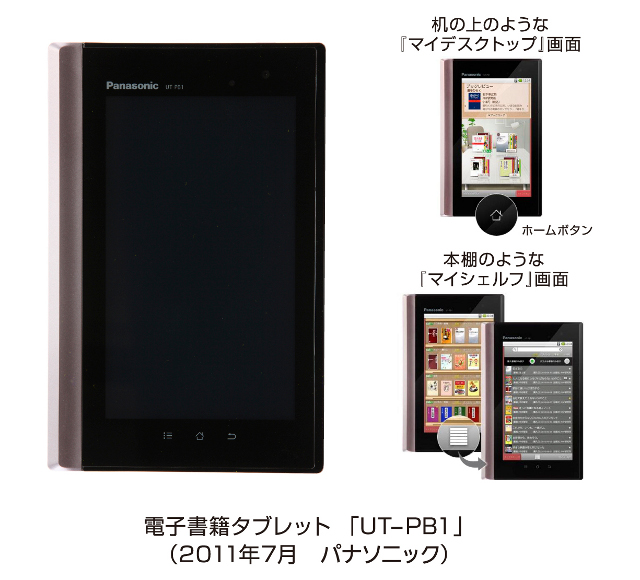



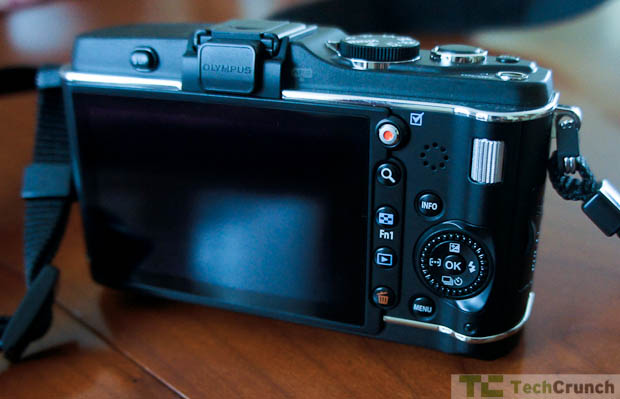
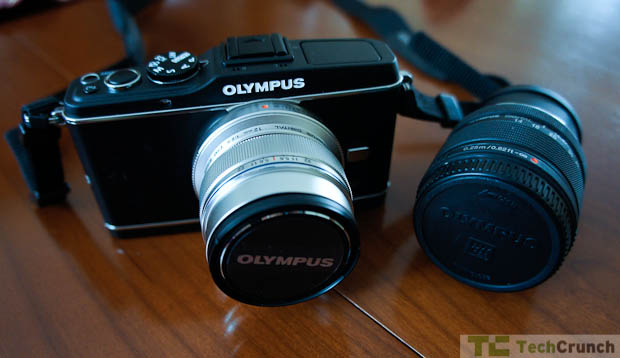


 If I saw any problems it was some slight blue/purple fuzz on some subjects. There were also some slight focus aberrations that occurred when shooting quickly but were difficult to reproduce.
If I saw any problems it was some slight blue/purple fuzz on some subjects. There were also some slight focus aberrations that occurred when shooting quickly but were difficult to reproduce.













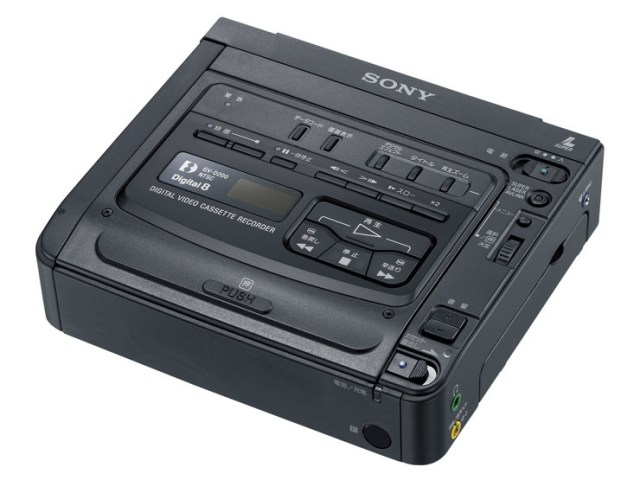
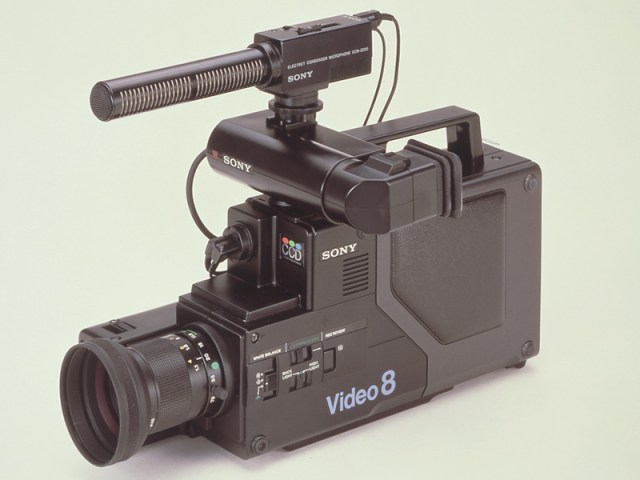
No comments:
Post a Comment